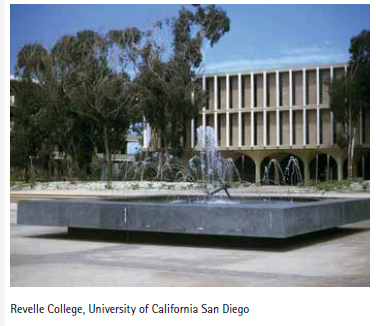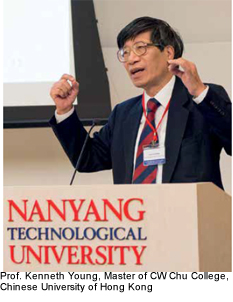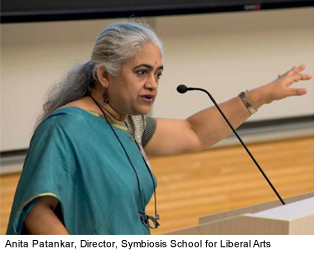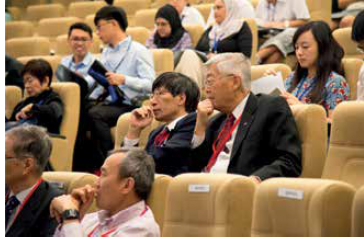|

The 2nd Pan Asia Liberal Arts Education Conference, organised by the Institute of Advanced Studies, Nanyang Technological University, brought experts and university deans from across the world to Singapore for a two-day conference on the future of liberal arts education in Asia.
While liberal arts education has been a mainstay of the American college and university system, its influence and implementation in Asia has been a more recent phenomenon. The challenges faced were clearly a motivational factor as pioneers in the push for the inclusion of liberal arts education in Asian education systems turned up eager to discuss their experiences and the road ahead.
What does "Liberal arts education" mean?
 Despite its long history in the US, the definition of liberal arts education has always been hazy. As Woo Chia Wei, President Emeritus of San Francisco State University as well as the Hong Kong University of Science and Technology, pointed out, the broadest definition of the term could be "matters not relating to the professional, vocational, or technical curriculum". He went on to explain that this led to different requirements demanded of students pursuing such programmes, even within a single institution like University of California, San Diego (UCSD). Yet, the vague nature of the definition is what allows for the diversity of programmes that all fall under the umbrella of liberal arts education. The one thing that all programmes seem to agree on is the importance of interdisciplinary education, which helps to broaden the perspectives and challenge the minds of students. Despite its long history in the US, the definition of liberal arts education has always been hazy. As Woo Chia Wei, President Emeritus of San Francisco State University as well as the Hong Kong University of Science and Technology, pointed out, the broadest definition of the term could be "matters not relating to the professional, vocational, or technical curriculum". He went on to explain that this led to different requirements demanded of students pursuing such programmes, even within a single institution like University of California, San Diego (UCSD). Yet, the vague nature of the definition is what allows for the diversity of programmes that all fall under the umbrella of liberal arts education. The one thing that all programmes seem to agree on is the importance of interdisciplinary education, which helps to broaden the perspectives and challenge the minds of students.
The Asian roadmap for liberal arts
 The reality that education systems are expected to serve as supply conduits of appropriately-skilled labour for countries' economic development was raised by several speakers. Kenneth Young of the Chinese University of Hong Kong (CUHK), humorously made this point in comparing surprisingly similar quotes from Chairman Mao and President Obama on the function of education and its usefulness in securing jobs and promoting economic growth. The utilitarian view of education, he noted, was at odds with the pursuit of knowledge for its own sake. Acknowledging the difficulty of implementing a pure pursuit of knowledge for its own sake in view of the economic pressures faced by most countries, he advocated a more practical approach of having a liberal education core contained within a broad education curriculum that could be easily adopted by most institutions. The reality that education systems are expected to serve as supply conduits of appropriately-skilled labour for countries' economic development was raised by several speakers. Kenneth Young of the Chinese University of Hong Kong (CUHK), humorously made this point in comparing surprisingly similar quotes from Chairman Mao and President Obama on the function of education and its usefulness in securing jobs and promoting economic growth. The utilitarian view of education, he noted, was at odds with the pursuit of knowledge for its own sake. Acknowledging the difficulty of implementing a pure pursuit of knowledge for its own sake in view of the economic pressures faced by most countries, he advocated a more practical approach of having a liberal education core contained within a broad education curriculum that could be easily adopted by most institutions.
He outlined the Foundation Program which had been implemented in CUHK comprising two required courses: In Dialogue with Humanity and In Dialogue with Nature. He felt that they were small enough in scale to be coherent and manageable, but yet substantial enough to have an impact on students. Students were required to read the original texts of major works which had been collected together in anthologies for the courses, and were taught in small classes of 25. He reported that student feedback had been positive.
 The practical difficulties of running a liberal arts education system in an Asian context were touched upon many times, most movingly by Anita Patankar of the Symbiosis School for Liberal Arts at the Symbiosis International University, India. In her presentation, she touched upon the challenges faced by India as well as the school itself, emphasising the role of the school in "preparing students for an uncertain future". The liberal arts programme, she said, focused on equipping students with critical thinking skills to enable them to apply problem-solving skills in conditions of uncertainty while maintaining a cross-cultural sensitivity that was vital in dealing with the complex issues facing a country such as India. The practical difficulties of running a liberal arts education system in an Asian context were touched upon many times, most movingly by Anita Patankar of the Symbiosis School for Liberal Arts at the Symbiosis International University, India. In her presentation, she touched upon the challenges faced by India as well as the school itself, emphasising the role of the school in "preparing students for an uncertain future". The liberal arts programme, she said, focused on equipping students with critical thinking skills to enable them to apply problem-solving skills in conditions of uncertainty while maintaining a cross-cultural sensitivity that was vital in dealing with the complex issues facing a country such as India.
At the micro level, the learning involved in a liberal arts programme is often complex and may seem contradictory to students pursuing science majors. Jin Xiaofeng of Fudan University had a simple answer to that: he said that "you can give humanistic value to almost anything by teaching it historically". In fact, he shared his pedagogic creed that science was the art of revealing the mystery of nature and was an important part of the humanities. His presentation was a lesson in seeing the Sciences through the aesthetic lenses of the Arts.
 Overall, conference participants seemed optimistic about the future of liberal arts education in Asia, enthusiastically sharing a plethora of ideas and models. Woo Chia Wei revealed that a new private university, currently being planned in China would adopt and extend the Revelle College, UCSD model. "There will be traditional schools and departments that offer disciplinary majors. Eight colleges with different liberal arts educational philosophy and distinct themes will be established, each with its own affiliated faculty, its own campus, and its own international partners," he declared.
Overall, conference participants seemed optimistic about the future of liberal arts education in Asia, enthusiastically sharing a plethora of ideas and models. Woo Chia Wei revealed that a new private university, currently being planned in China would adopt and extend the Revelle College, UCSD model. "There will be traditional schools and departments that offer disciplinary majors. Eight colleges with different liberal arts educational philosophy and distinct themes will be established, each with its own affiliated faculty, its own campus, and its own international partners," he declared.
Participants were confident that the next conference will further illuminate the path for liberal arts education in Asia, particularly as Asian education systems expand and liberalise.
"I strongly believe that every student should go through (liberal arts) education, where they can not only equip themselves with useful knowledge, but also develop themselves holistically."
- Goh Chia Chia, River Valley High School
After the conference, I have begun to think more about my place in the world, and I believe a liberal education will inform, inspire, and broaden the choices I make for my own future."
- Wang Yanhua, River Valley High School
|